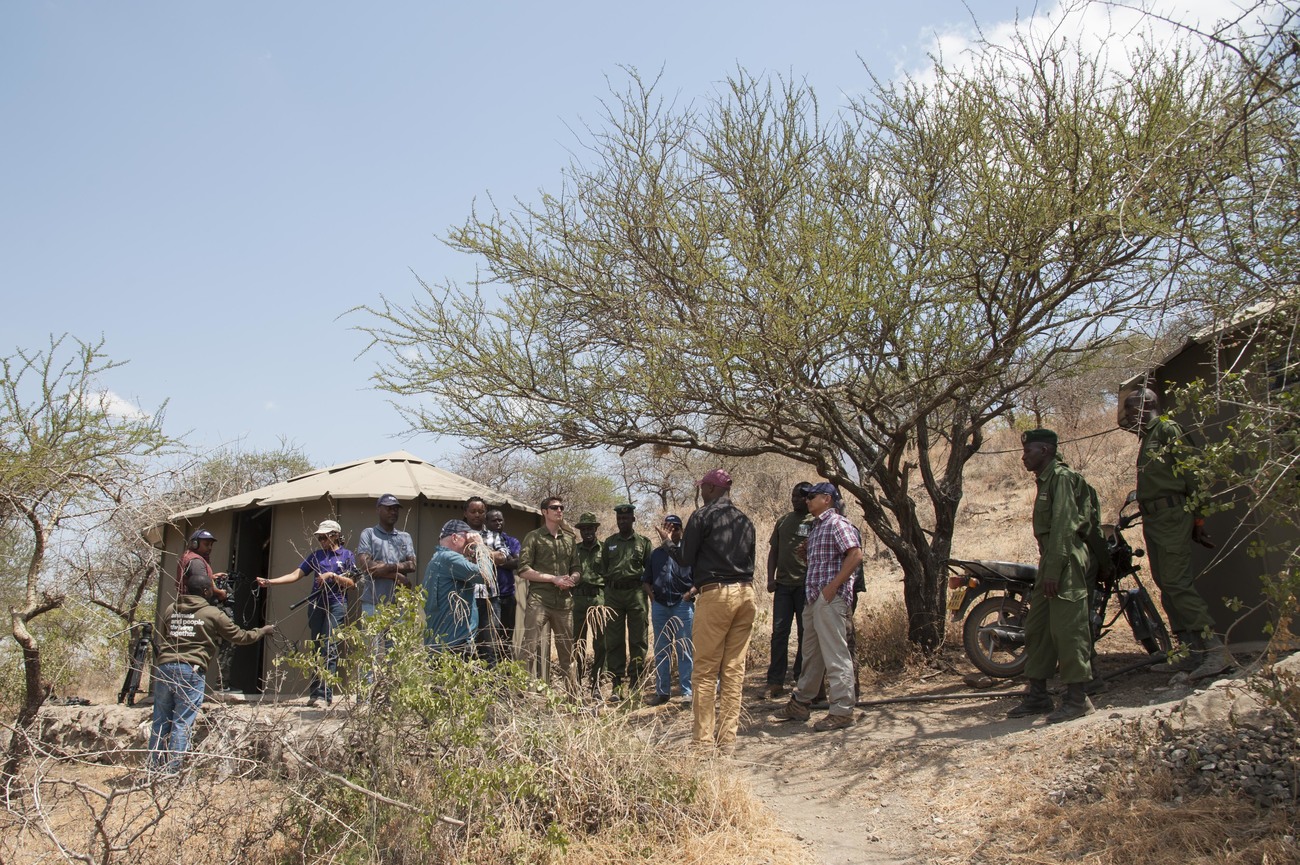Strengthening community support for law enforcement and anti-poaching efforts - East Africa
Local communities play a vital role in the fight against wildlife crimekeeping wildlife protected through community ranger housing
keeping wildlife protected through community ranger housing

The Amboseli landscape in Kenya’s south offers the best vistas of Africa’s highest mountain Kilimanjaro. These views when combined with the abundant wildlife species predominantly wildebeest, gazelle, zebra, elephants, lions, ostrich, cheetahs, and over 400 bird species, including the Lesser flamingo, is an enviable tourist and bird-watchers paradise. With the wildlife-protected Amboseli National Park measuring 392 square kilometres , the wildlife spends over 80% of their time in community lands also known as Group Ranches - the largest of which is the Olgulului/Olalarashi Group Ranch that spans over 133,000 hectares and almost completely surrounds the Park. With the Kenya Wildlife Service (KWS) offering protection within the Park, the Group Ranch depends on community wildlife rangers to offer security to the wildlife and their habitat.
These community wildlife rangers are stationed in six security bases and one mobile patrol unit manned on a rotational basis all-year round with several days off every month. Four of the six bases in the Kitenden Conservancy. Up until now, these bases have had less than ideal accommodations which have been round-shaped structures made from tin material that get extremely hot during the day and can be uncomfortably cold in the night. The structures often have leaky roofs and holes in the walls that invite insects and snakes and their small size can barely comfortably accommodate two adults at a time making them far from ideal for habitation. These living conditions make it difficult for the community rangers to efficiently execute their duties. To remedy this situation and ensure that the community rangers are comfortable, IFAW, with support from our donors, has replaced these sheet-metal structures with prefabricated concrete structures in four of the six outposts. Due to their prefabricated nature the structures are cost-effective and do not incur large costs or time in construction as would brick and mortar construction. They are also sturdy and well-insulated from the extreme weather. The prefabs also keep away snakes and insects and are large enough to comfortably accommodate 3 adults.

In July 2018, IFAW took over the management of the Group Ranch community rangers and by extension the security of wildlife in the Group Ranch. While officially handing over the newly-constructed structures to the community rangers, IFAW President and CEO Azzedine Downes stated that he was greatly pleased to be offering solutions to wildlife security by ensuring that those charged with wildlife protection are comfortable and are best placed to do their work as efficiently as possible. He gave his word that the community wildlife rangers would at the very least have a warm place to rest, a warm meal at the end of the day and a paycheck at the end of every month to cater for theirs’ and their families’ needs. Improving the working conditions of the community rangers has a positive impact on their health conditions and their performance. These rangers have the arduous responsibility of providing the first line of defense for Amboseli’s elephants and other wildlife
-Jacqueline Nyagah, IFAW Communications Manager
This blog was produced for the Strengthening Community Support for Law Enforcement and Anti-Poaching Efforts in the Greater Kilimanjaro Trans Frontier Conservation Area (TFCA) project, which is co-funded by the European Union and implemented by IFAW in partnership with African Wildlife Foundation (AWF) and Big Life Foundation. Its contents are the sole responsibility of IFAW and do not necessarily reflect the views of the European Union.
Related content
Every problem has a solution, every solution needs support.
The problems we face are urgent, complicated and resistant to change. Real solutions demand creativity, hard work and involvement from people like you.